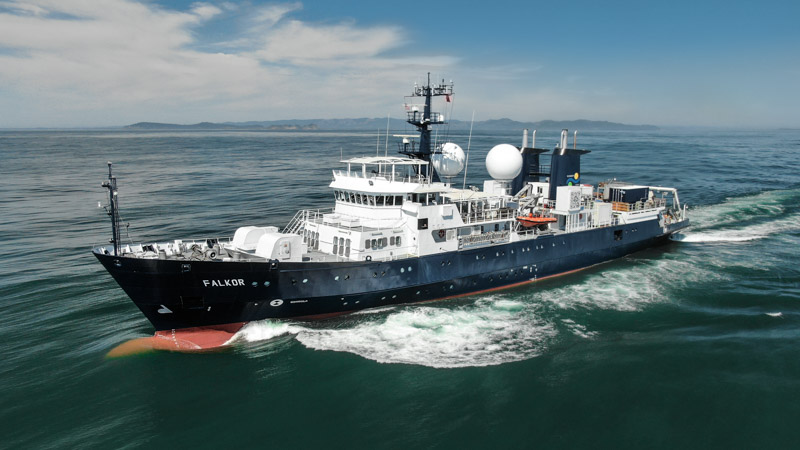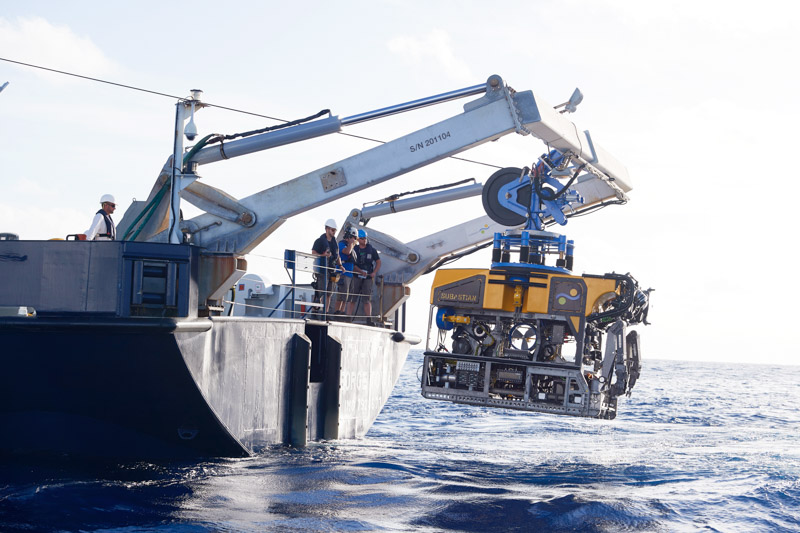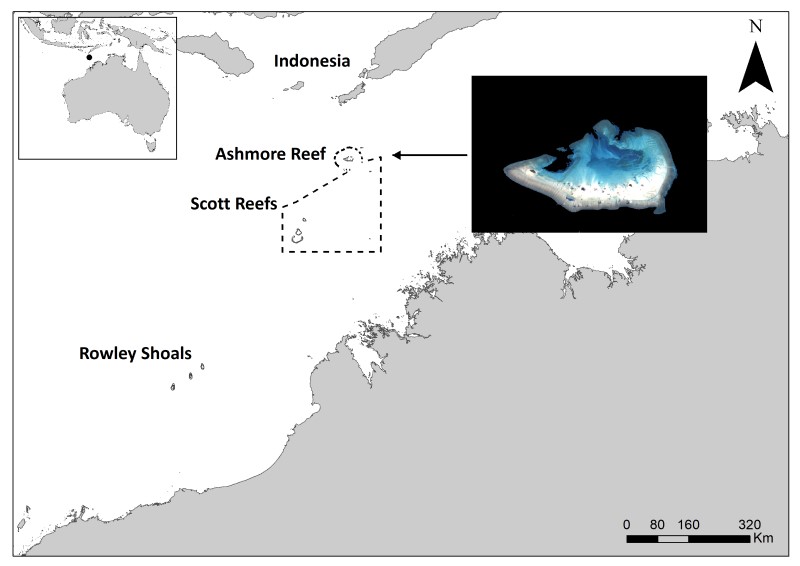We’re entering a mysterious, deep and dark dimension –
the twilight zone of coral reefs.
A team of eight researchers are embarking on a three-week deep-sea expedition at Ashmore Reef Marine Park, exploring the “unknown and undocumented” mesophotic coral ecosystem.
The voyage – on board the Schmidt Ocean Institute's RV Falkor – is led by Australian Institute of Marine Science’s Dr Karen Miller and includes scientists from the University of Western Australia, Curtin University and Western Australia Museum.
The team will be exploring Ashmore Reef’s submerged mesophotic coral ecosystems – a place never explored before.
Ashmore Reef Marine Park is one of 58 offshore Australian Marine Parks managed by Parks Australia.
Stay up-to-date with the expedition with updates from Schmidt Oceans Institute and on this page!
- Catch up on the ROV SuBastian videos on our YouTube playlist
- Watch for highlights on Twitter, Facebook and Instagram by using #twilightcorals
- Hear from AIMS expedition lead Dr Karen Miller in this ABC online article
We are entering…the twilight zone
Mesophotic coral ecosystems exist in low light – also known as the twilight zone – and lie between 30 to 150 metres below the surface, between the shallow-water light and the ocean’s deepest darkest depths.
These reefs are found around the globe, but little is known or understood about these ecosystems. It’s beyond the depth for scuba divers to explore and, until recently, scientists did not have the technologies to investigate such depths.
“What we do know about these reefs is they are an extension of shallow coral ecosystems and are likely to share some species,” Dr Miller said.
“But there is a lot of mystery about these reefs, there is a lot to explore – there are a lot of unanswered questions.”
Image courtesy Schmidt Ocean Institute
Why explore mesophotic coral ecosystems?
In an era of significant impacts occurring on shallow coral reefs from climate change, exploration of these deeper zones is vital for scientists to understand the ecosystem’s role in supporting tropical and subtropical regions.
“Not only do we want to understand these ecosystems, but we want to know how we can most effectively and efficiently monitor the health of these reefs,” she said.
“It is thought mesophotic coral ecosystem have significant ecological importance, including the ability to provide a refuge for shallow-water species as well as areas for spawning, breeding, feeding, and growth to maturity.
“These deeper reefs could also potentially reseed shallow water corals that are under environmental stress.”
AIMS’ strong focus on identifying and filling gaps in knowledge will help better understand the impacts of natural and human pressures on tropical ecosystems. This research will contribute to Parks Australia’s management of Ashmore Reef Marine Park and contribute to the protection of Australia’s offshore marine environment.
The research
The team of scientists will discover critical information about the community structure on mesophotic reefs of north west Australia, including understanding what ocean processes influence biodiversity, geographic distribution, and their connectivity to other coral systems.
During the voyage, the team will use underwater robotics and novel imaging technology to capture high resolution video across Ashmore’s mesophotic reef zones.
The science team will collect, via RV Falkor’s ROV SuBastian, biological samples from corals and other marine species. The gathered specimens will help ground-truth the new imaging technique’s capacity for biodiversity studies and taxonomic identification.
The new sampling and analysis approaches represent a crucial scientific benchmark enabling future monitoring and standardisation and comparability of mesophotic ecosystems globally.
ROV dives will be live-streamed on Schmidt Ocean Institute’s YouTube channel – allowing the public to explore Ashmore's mesophotic corals for the first time alongside the scientists.
Why Ashmore Reef Marine Park?
Ashmore Reef Marine Park is one of 58 Australian Marine Parks around the country that help protect the nation’s offshore marine environment.
Located closer to Indonesia than the Australian mainland, its remoteness presents very real challenges for research and management.
The shallow reef systems at Ashmore Reef are fairly well understood and this scientific exploration led by AIMS will help Parks Australia’s management by filling knowledge gaps about reef systems at deep depth ranges.






